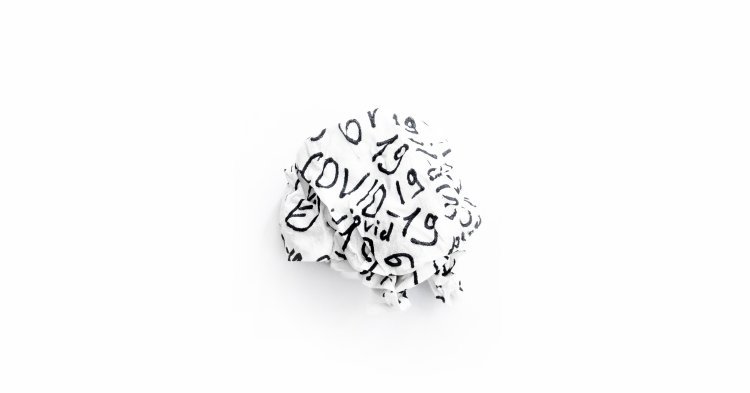There is a link between the Covid-19 pandemic and the increase of Facebook’s infodemic, the information epidemic. In fact, Facebook does not protect Europeans from misinformation, despite its will to do so. Facebook’s aim is to remove false information and news spread across its community through fact-checking. It is indeed important that the news shared on social media is real and accurate, to be informed about important social and political events, and to make decisions wisely. In 2020, Facebook’s algorithm allowed the network to reach 3.8 billion views of fake news, with the peak coinciding with the beginning of the Covid-19 crisis. From the research carried out by the non-profit organisation Avaaz, which promotes activism on global issues, Europe seems to be more at risk than the USA.
Facebook’s content curation
On April 20, the global democratic movement Avaaz published the results of a study on the effects of misinformation across Facebook in the report named ‘Left Behind. How Facebook is neglecting Europe’s infodemic’. Facebook seeks to stop and prevent the spread of false news on its platform, working with the International Fact-Checking Network (IFCN) information, first identifying potentially false news through users’ feedback or comments, then reviewing it, classifying it, and ultimately taking action.
The research was carried out on 135 pieces of misinformation published on Facebook between late 2020 and early 2021. Out of the five European languages taken into account, Italian appears to be the most frequently used for misinformation, followed by French, Portuguese, Spanish, and English. As a result, Italian citizens are more exposed to the infodemic. With 67% of identified fake news removed, Spain is one of the safest countries. As a whole, when misinformation was published in French, Portuguese, Spanish, or Italian, Facebook only removed 44% of it, contrasting with the 74% of English language content curated in the USA. In the fight against misinformation across social platforms, there exists a gap between the language information being distributed and the countries where it is allocated. The USA remains the place where Facebook takes more actions.
Language discrimination
According to the organisation Avaaz, Spanish is the non-English language on which actions had been taken the most and contents had been removed as a result of the US elections, during which Spanish misinformation had been reported as a crucial problem. This was due to the fact that there are states within the USA where Spanish is widely spoken; Facebook, therefore, removed fake news in Spanish, and automatically the news stopped spreading in Spanish-speaking countries and consequently in Spain.
Concerning the use of the English language, two main theories explain the reasons why English-speaking countries are more defiant to misinformation. On the one hand, the regulatory team fighting against disinformation is mainly composed of English-speaking people. On the other hand, the “America first” theory underlines that Facebook favours security in the United States anywhere else, Avaaz reports.
Italy: misinformation and government intervention
From clickbait headlines to badly reported news, from deliberately false news to especially false news shared by humorous pages, Italy faced a significant problem alongside the Covid-19 pandemic: online misinformation. Due to the immeasurable amounts of information circulating online daily, the Italian government decided to create a page on the website of the Ministry of Health dedicated to the most popular fake news to demonstrate its inaccuracy.
Famous is the case of Matteo Salvini, leader of the Italian political party Lega Nord. Two weeks after Italy announced its first lockdown, he shared an old video from 2015 of news broadcasting on his Facebook account. The video was a report on the creation of a virus for research purposes in China. With his post, Salvini wanted to show that Covid-19 had been created in a laboratory in Wuhan. With thousands of shares and comments, the post is now covered with the label ‘false news’.
Another example of fake news in Italy was that of the extension of the curfew until July 31. Relying on misleading headlines, politicians and citizens caused a stir and many spoke out against the aforementioned extension. In reality, Italian Prime Minister Mario Draghi simply extended the state of emergency until July 31, while the curfew was confirmed until the end of May. It was explained in the articles where the headling came from, but increasingly often news on social networks must be short and concise, as few people take the time to read the full articles.
Spain: a case of institutional and government distrust
In 2020, Spain experienced an unprecedented healthcare crisis originating from the Covid-19, decreeing a state of alarm on March 10. Institutions and political leaders sought to deploy communication strategies to prevent the spread of misleading information with the power to distort reality. As associate professor Mora-Rodríguez and researcher Melero-López declare in a journal about risk communication in Spain during the pandemic, social platforms like Facebook, Twitter, and Instagram have played a key role in disseminating information to the populace.
Unfortunately, as Statista demonstrates, the percentage of people finding false information about the Covid-19 in Spain is higher with instant messaging and social network consumption. Therefore, there are obvious limitations to media coverage through the Internet. It could be argued that the transmission of information about Covid-19 through more conventional media, such as television and radio, could decrease the distortion of reality. Unfortunately, two factors point to the contrary. First, there is an age-related digital divide in terms of the medium used for news consumption. Younger generations opt for access to social platforms to find news information, while older generations prefer to use conventional media. Secondly, Spain is marked by a context of significant political polarisation that causes an institutional disaffection that makes the media obsolete at times. Institutional distrust, coupled with the saturation of the online information environment, makes Spaniards susceptible to misinterpretation of what they read and fall for fake news.
After interviewing a small sample of Spaniards about their experience during the pandemic, most of them agreed on the influence that fraudulent information had on their beliefs. A 65-year-old retired woman had the conception that Covid-19 was like the flu and, therefore, thought that she would never be vaccinated. The uncertainty also arises in younger generations, whose beliefs about the magnitude and severity of the pandemic were skewed. Although the indecision supposedly only conditions their thoughts, a distortion of reality can lead to irresponsible behavior at the cost of people’s lives. In a different manner, adult Spaniards put the blame on political leaders for the spread of hoaxes, as they planted the seed of doubt in people’s minds by assuring that the virus was not transmissible by aerosol and that the use of masks was absurd.
Other examples of misleading news range from protecting oneself with faith and trust in God to gargling with warm salt water as a miracle cure. These are some of the many instances of fake news originated by the media, political leaders in Spain, or found on social networks. As a result, the unparalleled health crisis involving Covid-19 was misinterpreted by many people due to their news consumption habits and lack of fact-checking skills, despite Spain being one of the safest countries in regards to Facebook intelligence.
The impact of misinformation at a global scale
Fake news spread faster than truthful ones: as a reaction to fear, people trust the rumors out of distrust of the government and institutions. At the beginning of the Covid-19 pandemic, hydroxychloroquine was suggested as a drug to prevent the infection, leading to numerous cases of poisoning, BBC reports. There was no evidence of its efficacy, yet some people chose to risk their lives in the face of distress for the unknown.
When the Italian Medicines Agency decided to suspend the injection of Astrazeneca vaccine in Italy in March 2021, newspapers reported misleading headlines such as ‘professor died 10 days after having received vaccine’, ‘volunteer to test the vaccine in Brazil died’, yet the articles explained they both died for different reasons. The volunteer did not even receive the dose, but the headlines scared many citizens, leading to a substantial number of people growing skeptical about the vaccine.
The impact of misinformation can be dangerous at a mental health level, with the ability to lead to physical harm. If the information we receive is fraudulent, the populace is badly advised to make a well-informed decision or to develop critical thinking skills. The spread of fake news and the consequent ‘media terrorism’ during the pandemic has increased uncertainties, instigating fear, irresponsible do-it-yourself techniques to survive, and hatred for non-existent enemies, at a time when mental health is poised.
A hybrid solution: between technology and humans
Although new algorithms are being tested and developed to counter the spread of harmful and deceitful information across social networks, the human eye will probably always be needed to ensure efficiency in the process. First Draft, a project that fights online misinformation, is working with Google, Twitter, and Facebook in order to find a new algorithmic method. The algorithm is not yet accurate as it often does not recognise fake news, since it complies with Facebook community standards. Community standards should therefore be revised, however difficult it becomes for the algorithm to differentiate humoristic news, memes, misleading titles, and fake news. As of now, the best way to fight misinformation and disinformation is to double-check what we read before believing it, spreading it, and acting on it
References



Follow the comments: |
|
